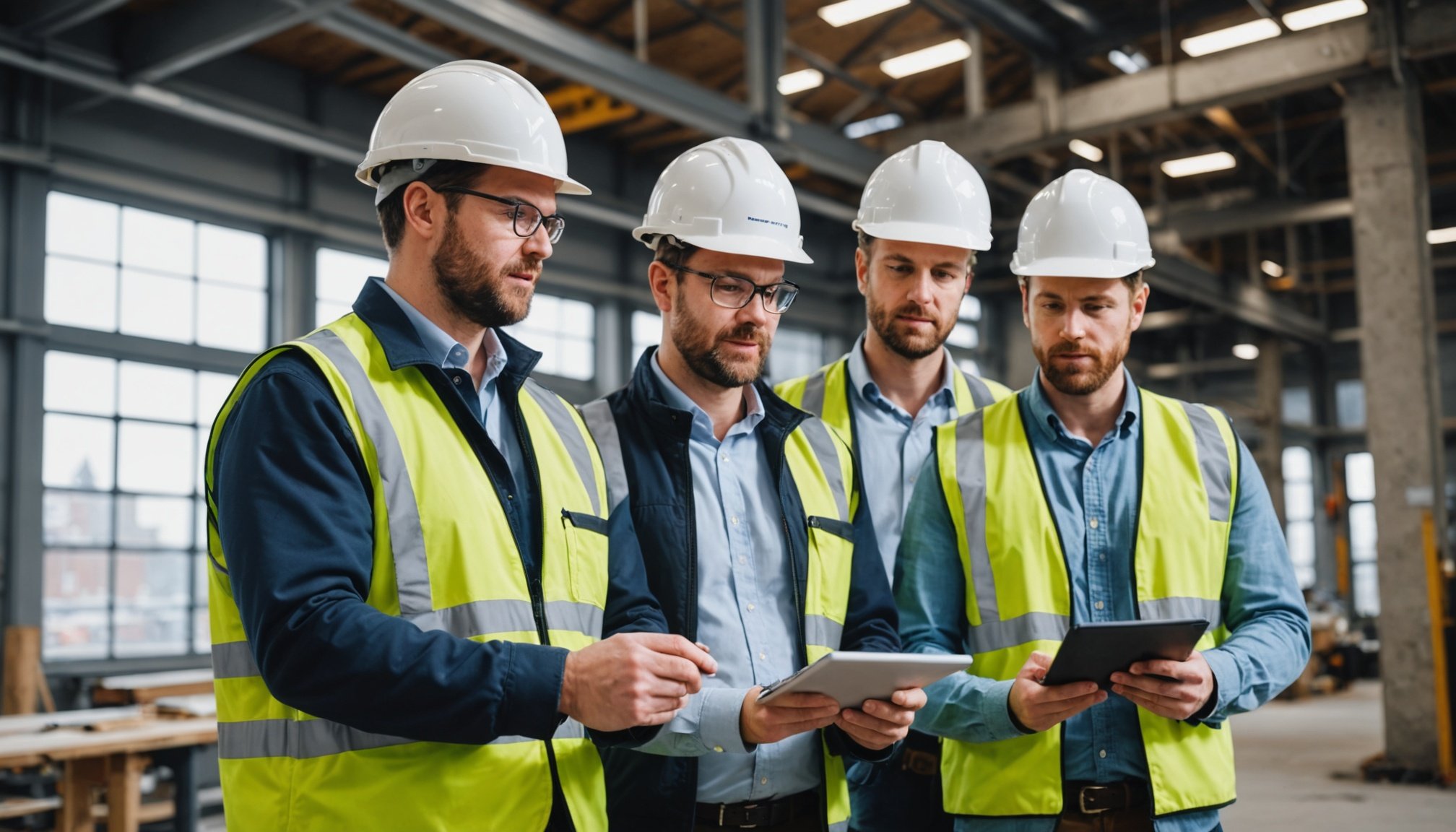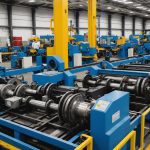Overview of Smart Building Innovations
Smart building technologies are transforming the UK construction sector by incorporating innovative building automation systems. These technologies allow for improved management of building operations, enhancing both efficiency and comfort. Key components of smart buildings include:
- Building automation systems: These manage and control building services such as heating, cooling, lighting, and security.
- Connected devices: Sensors and IoT devices that collect and share data to optimise building functions.
Recent innovations in smart building technology focus on integrating sustainable energy solutions, advanced security systems, and occupant-focused environments. Smart buildings can automatically adjust energy usage, contributing to energy efficiency and reduced operational costs. Leveraging the Internet of Things (IoT), these buildings ensure seamless communication between devices, enhancing overall system effectiveness.
Have you seen this : Revolutionary Tactics for UK Retailers to Elevate Augmented Reality Shopping
Importantly, smart buildings play a pivotal role in modern construction practices. They meet the growing demand for environmentally friendly and energy-efficient structures, aligning with global sustainability goals. Building automation also provides easy monitoring and maintenance, ultimately leading to cost savings for building owners. As the construction industry continues to evolve, embracing smart technologies is crucial for future-ready infrastructure. Understanding how to integrate these technologies effectively can position construction firms as industry leaders in innovation.
Case Studies of Successful Implementations
Exploring smart building case studies allows us to understand how industry leaders in the UK construction sector have successfully adopted innovative technologies. One notable example is the Edge building in Amsterdam, a pioneering structure heralded for its intelligent use of IoT and building automation systems. This project highlights how strategic implementation of smart technologies can enhance energy efficiency and occupant satisfaction.
Topic to read : Elevating Cybersecurity Consciousness: Premier Training Programs for UK Enterprises
In the UK, the redevelopment of King’s Cross exemplifies a successful adoption of smart innovations. The project’s integration of smart building technologies ensures optimal energy management, risk reduction, and improved efficiency. This case study demonstrates the importance of considering energy consumption and sustainability from the design phase through to completion, setting a benchmark for future projects.
Lessons learned from these implementations show the significance of incorporating smart technologies smoothly into existing processes. They underscore the need for stakeholder engagement and adequate training to ensure all parties are aligned with the project’s goals. Moreover, such implementations result in measurable impacts on project outcomes, increasing the return on investment while promoting sustainable practices.
By reflecting on these successful projects, construction firms can gain insights into overcoming potential barriers and utilise technologies efficiently to modernise their own buildings.
Benefits for Construction Firms
Incorporating smart building technologies offers significant advantages to construction firms, primarily through enhanced energy efficiency and substantial cost savings. Improved efficiency in energy usage results in reduced operational costs, fostering an economically sustainable model that firms can leverage to bolster their competitive edge. By managing energy consumption smartly, construction companies witness both immediate and long-term financial benefits.
The return on investment (ROI) achieved through adopting these technologies is an appealing factor for firms seeking to stay ahead in the industry. Smart technologies such as advanced sensors and IoT devices enable precise monitoring and optimisation of building operations. This leads to streamlined processes and minimised waste, contributing to increased ROI and long-term value for building owners.
Another notable benefit is improved stakeholder satisfaction. With smart building systems in place, building management becomes more efficient and user-friendly. Enhanced security, climate control, and lighting adjustments create a more comfortable environment for occupants. This not only meets the expectations of stakeholders but also aligns with modern expectations for sustainability and convenience.
Sustainability benefits further enhance the firm’s reputation by demonstrating a commitment to eco-friendly practices, aligning with global sustainability goals and meeting the demands of environmentally conscious clients.
Regulatory Considerations in the UK
In the UK construction sector, compliance with building regulations is crucial when integrating smart building technologies. Understanding these regulations ensures that firms not only meet legal requirements but also uphold standards of safety and innovation. Current UK regulations focus on energy efficiency, environmental impact, and safety standards. These criteria are especially significant as they influence how smart technologies are implemented in building automation systems.
Construction firms must remain vigilant about adhering to these regulations to avoid potential legal repercussions and ensure market competitiveness. Incorporating compliant smart technologies can help firms align with modern sustainability expectations and enhance their reputation.
Emerging standards are gradually shaping the future of smart buildings, fostering innovation while maintaining regulatory compliance. These new standards may address issues such as cybersecurity in building automation systems, ensuring that data collected from IoT devices is secure and that connectivity does not compromise the integrity of building operations.
To navigate these regulatory landscapes effectively, firms should focus on understanding and implementing best practices in smart technology integration. Engaging with regulatory bodies and staying informed about upcoming changes can position construction firms to adapt seamlessly to evolving standards, paving the way for future-ready infrastructure.
Challenges in Adopting Smart Building Innovations
The adoption of smart building technologies in the UK construction sector is not without its challenges. Common barriers to adoption include high initial costs, technological complexity, and resistance to change within firms. These hurdles can delay projects and hinder smooth integration.
Industry challenges often revolve around the need for substantial financial investment. Despite long-term cost savings, the upfront expenses can be daunting. Additionally, the tech-savvy nature of these systems requires construction firms to invest in skilled labour and ongoing staff training.
Overcoming technology hurdles is crucial for successful integration. One effective strategy is phased implementation, which allows firms to gradually integrate technologies into existing frameworks without overextending resources. Collaborative partnerships with technology providers are also essential. These partnerships can offer technical support and enhance understanding of smart technology integration.
Another strategy involves addressing internal resistance through education and demonstration of success stories from other firms. Sharing tangible benefits, such as improved efficiency and cost savings, helps dispel misconceptions and builds confidence among stakeholders.
Logistical constraints, like retrofitting older buildings, require creative solutions. Tailored approaches that consider the specific needs and limitations of each project can mitigate these issues, ensuring a smoother transition to smart technology.
Future Trends in Smart Building Technologies
As smart building technologies continue to evolve, they are reshaping the future of the construction industry. Current industry trends indicate a significant shift towards more integrated systems that leverage data analytics and artificial intelligence (AI). This shift aims to enhance building functionality, increase energy efficiency, and improve occupant comfort.
Data analytics play a pivotal role in this evolution. By collecting and analysing data from various sensors and IoT devices, construction firms can gain insights into building performance and predict maintenance needs effectively. Predictive analytics can help anticipate future issues, enabling proactive management and reducing downtime.
AI is another transformative force within smart buildings. Its potential is vast, from optimising HVAC systems to providing real-time energy management solutions. AI algorithms can learn and adjust to occupant behaviours, ensuring optimal energy usage and enhancing comfort levels.
Emerging technologies such as smart glass and advanced sensor networks are poised to redefine the landscape, making it more sustainable and user-centric. These innovations indicate a trend towards creating intelligent environments that respond dynamically to user needs.
Looking ahead, smart buildings will likely experience further integration of AI and data analytics, driving them towards adaptive, efficient, and sustainable spaces that align with the future of construction.
Tips for Effective Integration of Smart Technologies
Integrating smart building technologies into construction projects requires meticulous planning and a strategic approach. Smart technology integration is most successful when firms follow a set of best practices that ensure seamless adoption and maximised benefits. It begins with comprehensive assessment and planning, identifying key areas where smart technologies can provide the most impact.
One essential best practice is the importance of training and development for staff. Investing in regular training sessions equips the workforce with necessary skills to operate new systems, fostering confidence and reducing resistance.
Another critical factor is adopting collaborative approaches with technology providers. Establishing partnerships allows firms to gain access to technical expertise and support, ensuring successful technology deployment. Engaging providers early in the project cycle can optimise system integration and solve potential issues preemptively.
Effective project management is key in guiding technological transition smoothly. This involves clear communication, setting specific goals, and continuously monitoring progress. Building a flexible infrastructure that can adapt to evolving technologies is also paramount. This preparation ensures that as new technologies emerge, they can be integrated with minimal disruption.
By focusing on these strategies, construction firms can pave the way for future-ready projects and maintain a competitive edge in the industry.











